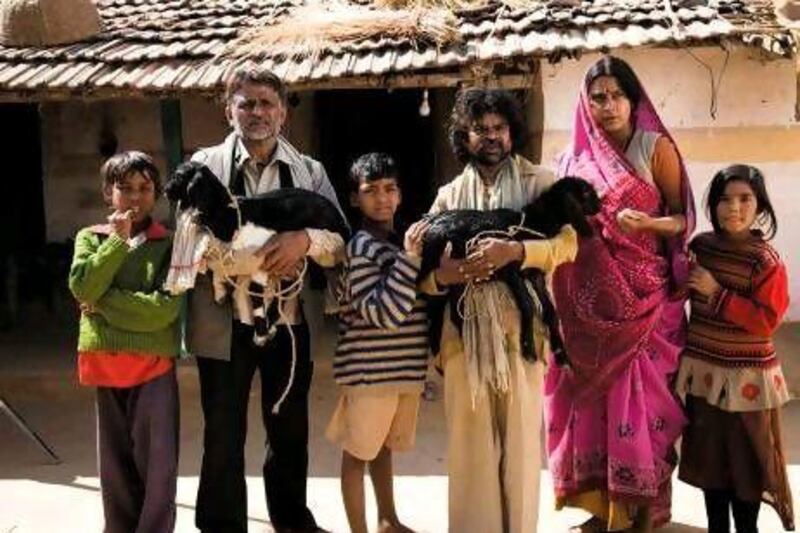After five years of doing single-scene bit roles in a few movies, hoping that those would launch him into bigger roles, Nawazuddin Siddiqui gave up. Frustrated and disappointed with Bollywood's obsession with big stars and cookie-cutter scripts that focused only on the lead actors and nepotism, he realised that these blink-and-you-miss-them roles wouldn't ever get him anywhere. Siddiqui, who was born to a farmer's family in Muzzafarnagar, a small town in Western Uttar Pradesh, and a graduate of India's foremost theatre school, shelved acting and began holding acting workshops instead.
But Siddiqui didn't know just how Bollywood would change and how very soon it would do so. In the past few years, storylines have come to resemble real life and real issues. Be it in cities or villages, irony has replaced slapstick, the lead actor is no longer the centrepiece of the movie, every actor matters and talent is king. The redoubtable success of low-budget and independent films side-by-side with big banner movies has propped up the stature of the bit actor.
The supporting cast of a film is now treated with as much importance and gravity as the casting for the hero-heroine. And often today, these characters break through all expectations and end up being the talking point of a movie.
Take the example of the new hit film, Kahaani. Vidya Balan's success was expected. However, it was the quiet but sinister role of the life-insurance-agent-by-day-and-deadly-assassin-by-night that became the rage. Thus, Saswata Chatterjee, hitherto unknown outside of West Bengal, turned into an overnight sensation. From the satirical, reflective film Peepli Live to light and frothy but believable productions such as Tanu Weds Manu and Ladies vs Ricky Bahl, the supporting actors have lent weight.
"Cinema is changing and if you don't cast well, you lose the connection with the audience. The days of David Dhawan and Govinda are gone. Today, even if it is a five-minute role, it has to be played by an actor. They lift the level of the film," says Mukesh Chhabra, who has provided casting for between 30 and 35 films including Rockstar, Teen They Bhai and Chillar Party.
Back in the day, the job of a casting director was considered to be a stepping stone to becoming an actor or a director. Indian film awards, unlike their western counterparts, don't even have an award category for casting.
"I am yet to meet someone whose life's aim is to be a casting director but now, it might change," says Shweta Tripathi, a casting director and an actor, who has assisted in casting for forthcoming films such as Monsoon Shootout and Ferrari ki Sawari.
While earlier the so-called casting director was hired only for the main characters, now even the bystander has to be auditioned. Chhabra, for instance, just finished casting for Kai Po Che, a film based on Chetan Bhagat's hit novel Three Mistakes of My Life, for which he had to cast 110 people, and 388 actors for Gangs of Wasseypur.
The demand for new talent is also forcing casting directors to look far and wide for fresh faces. Most say that seeing the same faces at every audition in Mumbai becomes monotonous and tiring and they have to go to various states to cast new people. Chhabra had to camp in Bihar and Uttar Pradesh for weeks to find the actors for Gangs of Wasseypur, a two-part crime film about the coal mafia in central India. "If you get actors from a similar socio-economic class as the role, it works better than having to teach a new language to a Bombay actor. There are hard-working people everywhere," he says. Chhabra cast real college students as themselves in Rockstar and a real family similarly in Chillar Party.
The road to becoming an actor, or at least being seen, though, has more or less remained the same. The visibility every aspiring actor wants still comes from theatre and advertisements. Tripathi has dabbled in ads and theatre which makes her a better casting director, as directors come to her looking for new faces. And although ads are not necessarily acting or performance driven, she says, they do help in registering a face.
Television acting, on the other hand, has fallen from grace and possibly become worse. Most casting directors rue that TV stories and acting are still dated, typecasted and repetitive. In a sense, it is reminiscent of Indian cinema between the 1970s and the 1990s when the actors played the same roles ad nauseam, such as that of the kid brother, the grieving widowed mother, the millionaire-megalomaniac father or the town police inspector. Before that era, however, some theatre actors such as Sriram Lagoo, Rohini Hattangadi, Om Prakash and Balraj Sahni were popular as "character actors" who had the acting prowess to slip into any role.
Still, the ultimate aim of a supporting actor is to see himself as the lead - the lure of the spotlight has never waned and is now possible to achieve.
Amrita Puri played a stellar supporting role in Aisha and was the lead in Blood Money; Richa Chaddha made the leap from Oye Lucky, Lucky Oye to Gangs of Wasseypur; and Siddiqui will play the central characters in the forthcoming Miss Lovely, Patang and Gangs of Wasseypur.
Siddiqui, understandably bitter and ambitious, has sensed the change and is not interested in doing supporting roles any longer. Just a few years ago, even TV was not an option for him as he is dark-skinned. He says: "Even a beggar's role in TV was played by a fair-skinned actor".
Well, look at him now.
[ artslife@thenational.ae ]
Follow
Arts & Life on Twitter
to keep up with all the latest news and events
[ @LifeNationalUAE ]





